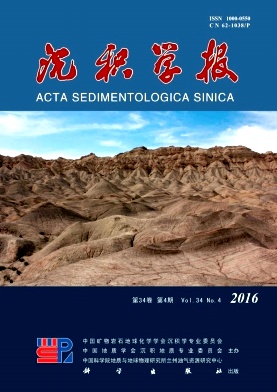Characteristics and Depositional Model of Paleocene and Eocene Source Rocks in Deepwater Area of Indus Fan
doi: 10.14027/j.cnki.cjxb.2016.04.018
- Received Date: 2015-08-20
- Rev Recd Date: 2015-10-16
- Publish Date: 2016-08-10
-
Key words:
- formation mechanism /
- sequence stratigraphy /
- source rocks /
- deepwater area /
- Indus Fan
Abstract: Based upon the data on seismic, well logging, core and geochemistry in Indus fan deepwater area and shallow shelf, we predict the development characteristics of Paleocene and Eocene source rocks of the Indus fan deepwater area, and discuss the depositional models of source rocks. The results show that Paleocene and Eocene source rocks has the most favorable conditions for development of high-quality hydrocarbon source rocks as it mainly developed transgressive system tracts and thinner thickness highstand system tract in Upper Eocene, deposited in a deepwater outershelf environment. Paleocene and Eocene source rocks are characterized by extensive distribution, large thickness with the maximum thickness of 900 m. The organic material forms of source rocks are type Ⅱ-Ⅲ, which are mixed organic matter. By the comprehensive analysis of various geological features, the distribution and model of source rocks has been reconstructed in the Indus Fan deepwater area. During the sedimentary period of the Paleocene and Eocene, the paleogeographic characteristics show narrow variation, which located in the low latitude belt near the equator, indicating warm and moist climate. As a good organic preservation condition was provided, the abundance of organic matter of Paleocene and Eocene source rocks is mainly controlled by the paleo-productivity and the organic matter flux to the sag. The research results will offer convenient service for oil and gas exploration in Indus Fan deepwater area.
| Citation: | JIANG KaiXi, YAO ChangHua, GUO QingZheng, HU YunTing, ZHAO CaiShun, LI HongRu, ZHU ZeDong, HE WenXiang, XIAO Fei, PENG Chao. Characteristics and Depositional Model of Paleocene and Eocene Source Rocks in Deepwater Area of Indus Fan[J]. Acta Sedimentologica Sinica, 2016, 34(4): 785-793. doi: 10.14027/j.cnki.cjxb.2016.04.018 |






 DownLoad:
DownLoad: